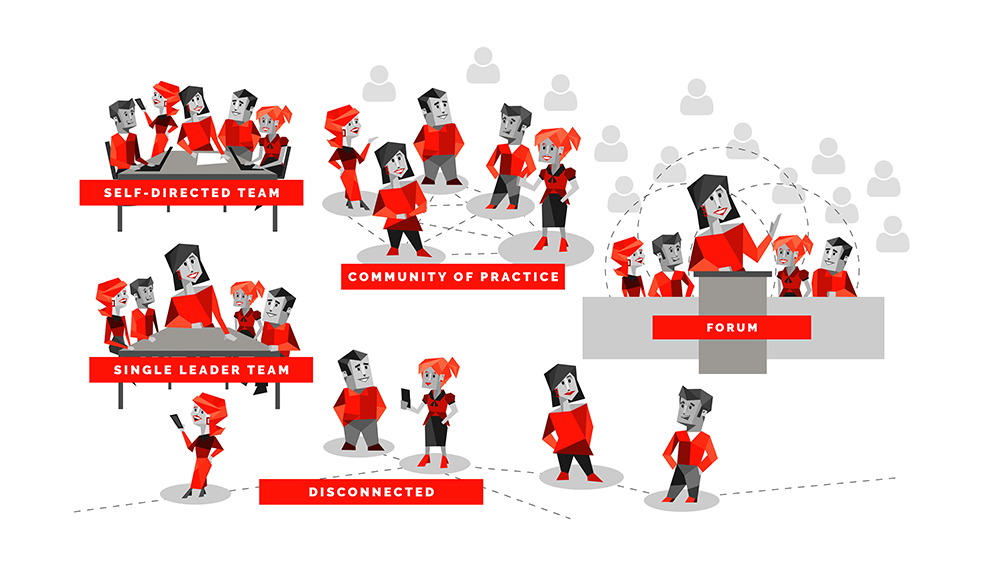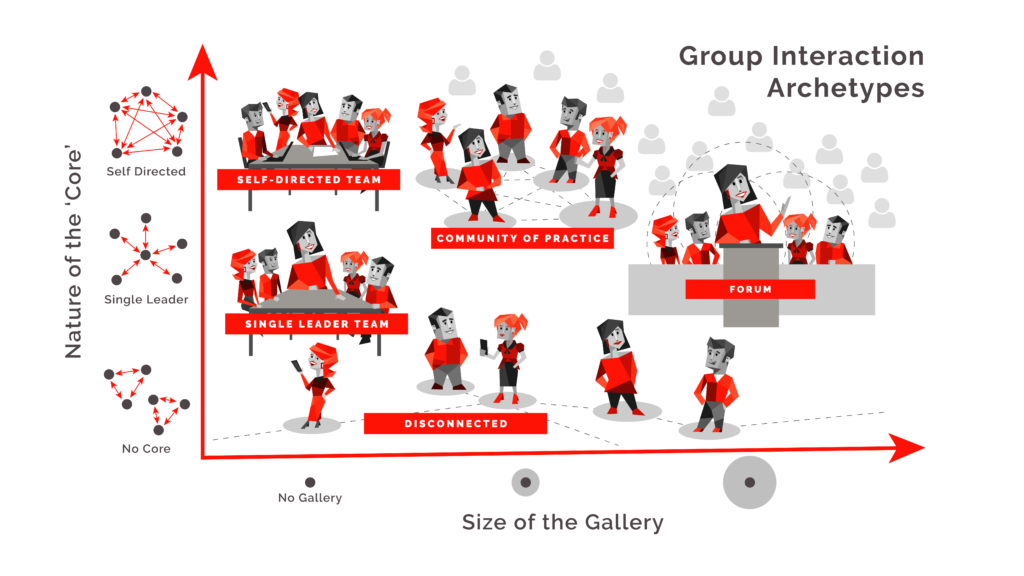Meet our ‘SWOOP for Microsoft Teams’ Personas
Ahead of the global launch of SWOOP Analytics’ newest product – SWOOP for Microsoft Teams –on July 1, 2019, we would like to introduce you to our SWOOP for Teams personas.
We know one of the biggest challenges for new adopters of Microsoft Teams is to rapidly show results. We also know from our extensive research on digital ‘teams’ that the average size of a digital team is almost 300 members, a group too big to be called a team. Therefore, many teams are teams in name only.
These team personas will immediately give you feedback on how your team is operating, at a quick glance. When you use these personas with SWOOP’s team social graph, you will be best placed to identify how to maximise team productivity by leveraging or adjusting your team’s persona.
Based on decades of research into physical and digital teams, we have categorised five ‘team’ personas:
Self-directed Team
Single Leader Team
Disconnected Team
Community of Practice
Forum
The first two team types, or team personas, are positive team personas while a Disconnected Team may need immediate help. A Community of Practice team and Forum would be better suited to an Enterprise Network, like Yammer, rather than Microsoft Teams, though ultimately the technology platform choice is a group decision.
Digital teams are not comparable with what we traditionally think of as teams.
We found the majority of digital teams with more than 50 members had a small ‘core’ of interacting members, with the rest largely inactive and, we assume, simply watching; hence our label of the ‘Gallery’ in the graphic below. Along with the nature of the Core and the Size of the Gallery, we have also used our Key Player Dependency measure (identifies the degree of reliance on a single leader) and %Two-way connections (identifies the level of team cohesion) to characterise the team personas.
The ‘Core’ of interacting members has been characterised as:
Core members interacting with each other, and largely two-way (Self-directed)
Core members are largely facilitated by a single leader (Single leader)
Core are largely disconnected cliques or factions (Disconnected)
We identified teams with a self-directed core and a large gallery as a “Community of Practice”. Teams with a single leader and large gallery we classified as a “Forum”.
Some Key Questions to Ask Regarding your Team Personas
Team productivity relies on matching your team structure and mode of operation i.e. your Team Persona, with your team charter of purpose and objectives. Business contexts will always change, requiring teams to adjust and adapt at varying degree of urgency. The following table identifies which Team Personas best match the differing business contexts teams are regularly faced with.
Have a look at the business contexts identified. Can you see a context that maps to your current team charter? If so, how well does your current Team persona compare with the matched business contexts?
If your team is classified as “Disconnected”, which Team Persona should you be looking to migrate to?
SWOOP for Teams will give deep insights into team collaboration. Data from SWOOP will show you clearly what is working and what’s not and will provide insights for how to improve your team and organisation.
We’ll continue to share more features of SWOOP for Teams ahead of the July 1 launch. If you would like to learn more about SWOOP for Teams, please register your interest here.




